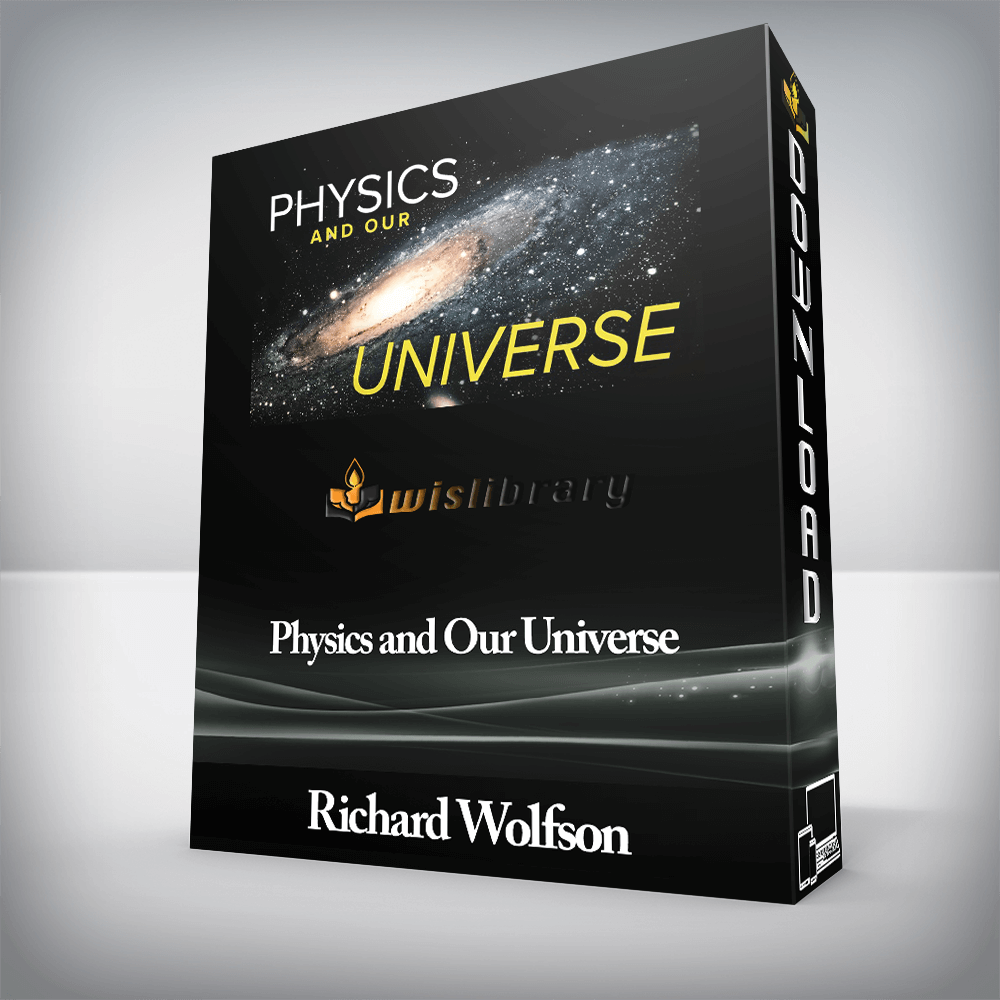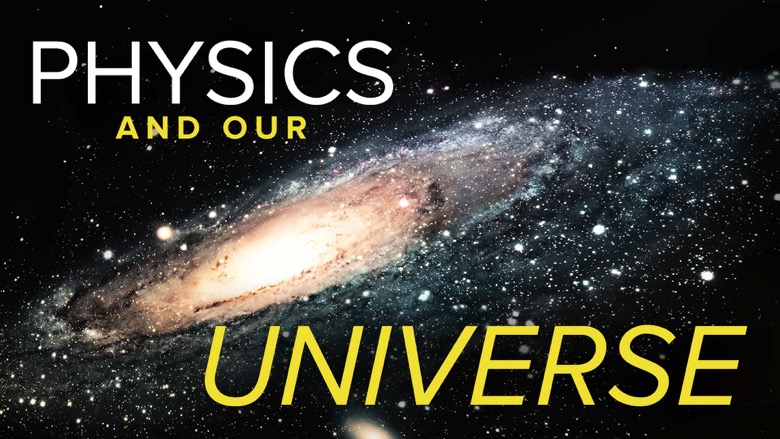


Physics explains the workings of the universe at the deepest level, the everyday natural phenomena that are all around us, and the technologies that enable modern society. It’s an essential liberal art.
Institution: Middlebury College
Alma mater: Dartmouth College
Physics is the fundamental science. It explains how the universe behaves at every scale, from the subatomic to the extragalactic. It describes the most basic objects and forces and how they interact. Its laws tell us how the planets move, where light comes from, what keeps birds aloft, why a magnet attracts and also repels, and when a falling object will hit the ground, and it gives answers to countless other questions about how the world works.
Physics also gives us extraordinary power over the world, paving the way for devices from radios to GPS satellites, from steam engines to nanomaterials. It’s no exaggeration to say that every invention ever conceived makes use of the principles of physics. Moreover, physics not only underlies all of the natural sciences and engineering, but also its discoveries touch on the deepest philosophical questions about the nature of reality.
Which makes physics sound like the most complicated subject there is. But it isn’t. The beauty of physics is that it is simple, so simple that anyone can learn it. In 60 enthralling half-hour lectures, Physics and Our Universe: How It All Works proves that case, giving you a robust, introductory college-level course in physics. This course doesn’t stint on details and always presents its subject in all of its elegance—yet it doesn’t rely heavily on equations and mathematics, using nothing more advanced than high school algebra and trigonometry.
Your teacher is Professor Richard Wolfson, a noted physicist and educator at Middlebury College. Professor Wolfson is author or coauthor of a wide range of physics textbooks, including a widely used algebra-based introduction to the subject for college students. He has specially designed Physics and Our Universe to be entirely self-contained, requiring no additional resources. And for those who wish to dig deeper, he includes an extensive list of suggested readings that will enhance your understanding of basic physics.
Explore the Fundamentals of Reality
Intensively illustrated with diagrams, illustrations, animations, graphs, and other visual aids, these lectures introduce you to scores of fundamental ideas such as these:
A Course of Breathtaking Scope
The above ideas illustrate the breathtaking scope of Physics and Our Universe, which is broken into six areas of physics plus an introductory section that take you from Isaac Newton’s influential “clockwork universe” in the 17th century to the astonishing ideas of modern physics, which have overturned centuries-old views of space, time, and matter. The seven sections of the course are these:
As vast as this scope is, you will not be overwhelmed, because one set of ideas in physics builds on those that precede it. Professor Wolfson constantly reviews where you’ve been, tying together different concepts and giving you a profound sense of how one thing leads to another in physics. Since the 17th century, physics has expanded like a densely branching tree, with productive new shoots continually forming, some growing into major limbs, but all tracing back to the sturdy foundation built by Isaac Newton and others—which is why Physics and Our Universe and most other introductory physics courses have a historical focus, charting the fascinating growth of the field.
An interesting example is Newtonian mechanics. Developments in the late 19th century showed that Newton’s system breaks down at very high speeds and small scales, which is why relativity and quantum theory replaced classical physics in these realms. But the Newtonian approach is still alive and well for many applications. Newtonian mechanics will get you to the moon in a spacecraft, allow you to build a dam or a skyscraper, explain the behavior of the atmosphere, and much more. On the other hand, for objects traveling close to the speed of light or events happening in the subatomic realm, you learn that relativity and quantum theory are the powerful new tools for describing how the world works.
Seeing Is Believing
Physics would not be physics without experiments, and one of the engaging aspects of this course is the many on-screen demonstrations that Professor Wolfson performs to illustrate physical principles in action. With a showman’s gifts, he conducts scores of experiments, including the following:
Math for Those Who Want to Probe Deeper
Professor Wolfson doesn’t just perform memorable experiments. He introduces basic mathematics to analyze situations in detail—for example, by calculating exactly the speed a rollercoaster needs to travel to keep passengers from falling out at the top of a loop-the-loop track, or by showing that the reason high voltage is used for electrical power transmission is revealed in the simple expression that applies Ohm’s law, relating current and voltage, to the formula for power.
You also see how amazing insights can be hidden in seemingly trivial mathematical details. Antimatter was first postulated when physicist Paul Dirac was faced with a square root term in an equation, and instead of throwing out one of the answers as would normally have been done, he decided to pursue the implications of two solutions.
Whenever Professor Wolfson introduces an equation, he explains what every term in the equation means and the significance of the equation for physics. You need not go any further than this to follow his presentation, but for those who wish to probe deeper he works out solutions to many problems, showing the extraordinary reach of mathematics in analyzing nature. But he stresses that physics is not about math; it’s the ideas of physics that are crucial.
Understand the World in a New Way
Above all, the ideas of physics are simple. As you discover in this course, just a handful of important concepts permeate all of physics. Among them are
The key is not just to think in terms of these principles, but also to let go of common misconceptions, such as the idea that force causes motion; in fact, force causes change in motion. As you progress through Physics and Our Universe, you’ll inevitably start to see the world differently.
“I love teaching physics and I love to see the understanding light up in people’s eyes,” says Professor Wolfson. “You’ll see common, everyday phenomena with new understanding, like slamming on the brakes of your car and hearing the antilock brake system engage and knowing the physics of why it works; like going out on a very cold day and appreciating why your breath is condensing; like turning on your computer and understanding what’s going on in those circuits. You will come to a much greater appreciation of all aspects of the world around you.”
1The Fundamental Science
2Languages of Physics
3Describing Motion
4Falling Freely
5It’s a 3-D World!
6Going in Circles
7Causes of Motion
8Using Newton’s Laws—1-D motion
9Action and Reaction
10Newton’s Laws in 2 and 3 Dimensions
11Work and Energy
12Using Energy Conservation
13Gravity
14Systems of Particles
15Rotational Motion
16Keeping Still
17Back and Forth—Oscillatory Motion
18Making Waves
19Fluid Statics—The Tip of the Iceberg
20Fluid Dynamics
21Heat and Temperature
22Heat Transfer
23Matter and Heat
24The Ideal Gas
25Heat and Work
26Entropy—The Second Law of Thermodynamics
27Consequences of the Second Law
28A Charged World
29The Electric Field
30Electric Potential
31Electric Energy
32Electric Current
33Electric Circuits
34Magnetism
35The Origin of Magnetism
36Electromagnetic Induction
37Applications of Electromagnetic Induction
38Magnetic Energy
39AC/DC
40Electromagnetic Waves
41Reflection and Refraction
42Imaging
43Wave Optics
44Cracks in the Classical Picture
45Earth, Ether, Light
46Special Relativity
47Time and Space
48Space-Time and Mass-Energy
49General Relativity
50Introducing the Quantum
51Atomic Quandaries
52Wave or Particle?
53Quantum Mechanics
54Atoms
55Molecules and Solids
56The Atomic Nucleus
57Energy from the Nucleus
58The Particle Zoo
59An Evolving Universe
60Humble Physics—What We Don’t Know
There are no reviews yet.
You must be <a href="https://wislibrary.net/my-account/">logged in</a> to post a review.